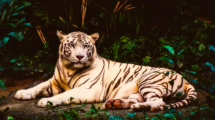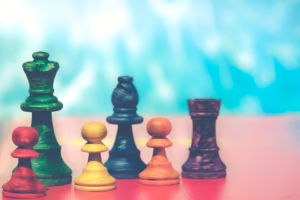Unexpected Collaborations: Musicians Join Forces for Charity
Introduction
In an era where the music industry is constantly evolving, one of the most heartwarming trends to emerge is the unexpected collaboration between artists for charitable causes. These partnerships not only highlight the power of music to foster community and empathy but also utilize celebrity influence for social good. From hip-hop heavyweights to indie darlings and pop icons, musicians across genres have joined forces, surprising fans and raising significant funds for various causes. In this article, we will explore the phenomenon of unexpected collaborations among musicians for charity, their impact, notable examples, and the underlying message these collaborations convey.
The Power of Music and Charity
Music has long played a crucial role in fundraising and awareness campaigns. Historically, artists have harnessed their talents and platforms to address societal issues and generate support for those in need. By merging creativity with compassion, musicians can engage their audiences and inspire them to contribute to causes that may otherwise go unnoticed.
Emotional Connection
The emotional connection forged through music can amplify the message of a charitable cause. When fans see their favorite artists united for a common goal, it creates a sense of community and urgency. The shared experience of listening to a song often transcends geographical and cultural barriers, enabling even the most disparate fanbases to come together for a worthy cause.
The Mechanisms of Collaboration
Unexpected collaborations can take various forms, including joint singles, benefit concerts, and fundraising events. These collaborative efforts not only leverage the resources and reach of multiple artists but also encourage fans to engage in charitable activities. The excitement generated by unique collaborations can lead to increased sales and donations, creating a win-win scenario for both the musicians and the causes they support.
Notable Collaborations
1. “We Are the World”
One of the most iconic examples of unexpected musical collaboration for charity is “We Are the World,” released in 1985. Written by Michael Jackson and Lionel Richie, this song brought together 45 major artists, including Bruce Springsteen, Tina Turner, and Bob Dylan, to raise funds for famine relief in Africa. The collaboration not only raised millions of dollars but also set a precedent for future charity singles.
2. “One Love” – Bob Marley Tribute
In 2020, musicians from diverse genres came together to record a tribute to Bob Marley’s timeless hit “One Love.” This unexpected collaboration featured artists such as The Weeknd, Dua Lipa, and Janelle Monáe. They donated proceeds to various global initiatives supporting food security and education. This blend of different styles highlighted the universal appeal of Marley’s message of unity and love.
3. “Artists Unite: For the People”
In 2021, a collective of musicians banded together to create the single “Artists Unite: For the People.” Featuring artists from multiple genres, including rappers, rock bands, and pop singers, the track addressed racial inequality and social justice. The collaboration served as both a creative endeavor and a rallying cry for change, raising funds for various organizations dedicated to social reform.
4. “The Chicks Are Back” – Music with a Mission
The Chicks (formerly known as the Dixie Chicks) surprised fans with a charity concert in 2022, collaborating with artists such as Jack Antonoff and Billie Eilish. Proceeds from the show supported initiatives focused on women’s health and reproductive rights. This unique collaboration not only emphasized the importance of women in the music industry but also highlighted critical social issues.
The Messaging Behind Collaborations
The success of these collaborations often relies heavily on the artists’ commitment to the message behind their music.
Unified Vision
An essential aspect of these unexpected collaborations is the unified vision shared by the artists. Whether it’s raising awareness about climate change, social justice, or humanitarian aid, the artists involved collectively embody the values they aim to promote. The synergy created by merging distinct artistic styles can also lead to the birth of a new sound and message that resonates with audiences more profoundly than solo efforts.
Building Relationships
Unexpected collaborations often lead to long-lasting relationships among artists. These partnerships can bridge gaps between genres and demographics, fostering a culture of inclusivity. As artists explore uncharted territories, they not only expand their musical repertoire but also build bridges with fans who may not have previously engaged with their music.
The Fan Response
Increased Engagement
Fans are often thrilled to see their favorite musicians working together, especially when the collaboration is unexpected. This excitement can lead to increased engagement, sharing of the music, and a greater willingness to contribute to the cause being supported. Social media plays a significant role in amplifying these collaborations, as fans share content with their networks, further extending the reach of the charitable message.
Promoting Awareness
The influence of artists extends beyond mere fundraising; they also serve as powerful advocates for awareness. Fans often learn about the issues behind these collaborations—such as poverty, racism, or health problems—through the artists’ platforms. This heightened awareness can foster a culture of activism, inspiring fans to get involved in various charitable efforts.
The Future of Collaborative Charity
As we move forward, the landscape of music and charity will likely continue to evolve. The growing trend of unexpected collaborations among artists points to a broader cultural shift within the music industry, emphasizing community engagement and social responsibility.
Evolving Technologies
With the rise of social media and streaming platforms, artists have unprecedented opportunities to collaborate and reach audiences around the globe. This technological evolution allows for real-time fundraising and instant sharing of music, making it easier for artists to mobilize fans for charitable causes.
A Call to Action
Looking ahead, artists have the ability to influence not just their fans but entire communities through collaborative efforts. By fostering partnerships that emphasize social good, they can set examples of unity and compassion. Whether through jointly released songs or shared benefit concerts, these unexpected collaborations are bound to leave a lasting impact.
Conclusion
Unexpected collaborations among musicians for charity demonstrate the profound impact that music can have on societal issues. They unite artists and fans in a common purpose, igniting conversations and promoting awareness. As we celebrate these remarkable partnerships, it’s clear that music transcends boundaries, bringing people together for a greater cause. By continuing to embrace the spirit of collaboration, musicians can harness their collective power to create positive change in the world. The beauty of these extraordinary efforts lies not just in the funds raised or the music created but in the message of love and solidarity that resonates with everyone, reminding us of our shared humanity.
References
- Unofficial website of “We Are the World”
- Spotify charts and data on collaborations
- Direct charity organization links related to mentioned artists
- Social media analytics on fan engagement
This article highlights a pressing theme in today’s music industry, shedding light on the humanitarian aspects of unexpected collaborations. By exemplifying the potential for unity through music, we are reminded of the invaluable role artists can play in creating meaningful change in society.
The above piece provides a comprehensive insight into the collaboration of musicians for charity, capturing their cultural significance and the emotional connection they forge with their audience. If you need any more specific details or themes further elaborated upon, feel free to ask!


























Add Comment